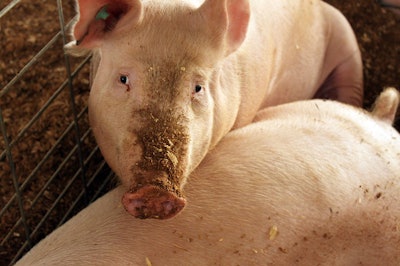
The African swine fever (ASF) virus sweeping through China and other countries does not pose a direct threat to pets, humans or other non-porcine species, but its effect on the pork protein supply has significant ramifications for the overall global meat protein market, including protein sources for pet food.
Several experts presenting at the 2019 Feed and Pet Food Joint Conference, hosted by the Pet Food Institute and National Grain and Feed Association in Kansas City, September 30-October 2, discussed the severity of ASF, its decimation of the pig population in China and the impending consequences for the pork supply and other sources of protein.
Chinese hog loss represents large global protein supply loss
Ambassador Gregg Doud, chief agricultural negotiator for the Office of the U.S. Trade Representative, provided context for the ASF situation in China, explaining that the country has half of the world’s hogs, at 600 million. “If they lost 16% of the herd, that’s the entire global worth of pork produced,” he said. “If they lost 30%, that’s the same number of the total hogs in the U.S.” Yet China has reported its hog loss due to ASF at 37% already, and Doud believes the number is probably closer to 50%. “That means a huge impact on the pork and protein supply.”
Randy Blach, CEO of Cattlefax and another agricultural expert speaking at the joint conference, added his perspective, saying the average Chinese consumer eats 88 pounds of pork a year. Also estimating China’s actual hog loss at 45-50% of its herd, he said that loss represents 60% of all global meat exports, from all livestock.
ASF not yet in U.S. but pet food, feed industries must be vigilant
Cassie Jones, Ph.D., associate professor with the Department of Animal Sciences and Industry at Kansas State University, showed a video map of ASF’s spread. She described it as a human-driven disease that was probably introduced to Eurasia in 2007 from sub-Saharan Africa, likely by a person carrying the virus unknowingly in some way.
Since then, human spreading has caused jumps of ASF outbreaks from one region of Eurasia to another. “A year ago, we had 26 different outbreaks; now it’s 149,” Jones said. “This year, there has been a new country with outbreaks nearly every month. In some parts of China, they might have 75-90% pig mortality.”
Thus, the disease has now spread to Vietnam, South Korea and other Asian countries. During the last week of September, it even jumped to East Timor, an island off Australia. “Pigs can’t swim that far!” Jones commented, stressing the human carrier element.
Because of the risk of spreading, Jones said all people and industries, including pet food, must be vigilant. She described the extreme measures she took upon returning from a trip to China, even leaving shoes and clothes she had worn there in China or her airport of entry.
Because there is currently no vaccine to prevent ASF or medication to treat it, Jones said, if it reaches the U.S., the only solution at this point is to stamp it out as quickly as possibly by euthanizing all swine within a three-kilometer radius of the outbreak.
Inevitable that ASF will reach U.S.?
Steven M. Solomon, DVM, MPH, director of the Food and Drug Administration’s Center for Veterinary Medicine, said his agency is prepared to expedite review of potential mitigants for preventing the spread of ASF in the U.S. He urged collaboration now among the animal feed and pork industries, and regulators, to prepare for the virus’s infiltration here.
Jones agreed preparation now is wise. “I think it’s inevitable it will be here in six months,” she said, but added that she predicted the same timeline in March of this year as well as fall 2018 and was wrong both times. “Let's hope I’m still wrong,” she said.

















